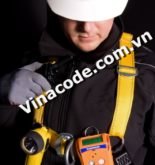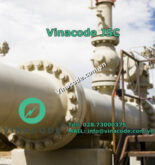Ideal for use in water supply, waste water and waste industry applications, the Draeger Safety (Germany) range features a wide variety of fixed gas detection systems, transmitters and sensors for use with oxygen, toxic and flammable gases. Combining cost savings with fast, safe and reliable detection of hydrogen sulphide, methane and oxygen depletion, the range also features long life sensors which increase calibration intervals to one year.
Ensuring the reliable detection of combustible gases and vapours, the Draeger PIR 3000 is a smart, explosion proof, infra-red (IR) gas transmitter. ATEX approved and designed to provide failsafe operation in any potentially explosive environment, it can be used in oxygen depleted atmospheres and is immune to poisons such as H2S. Lower in cost than traditional pellistor or catalytic bead detectors, IR technology is also more robust and stable. In addition, the increased accuracy of IR means that maintenance costs can be significantly reduced with traditional six- monthly calibration intervals being extended to one year. Together with an overall life expectancy of more than 15 years, this means that the PIR 3000 is able to dramatically reduce lifetime ownership costs.
The low cost, explosion proof Draeger Sensor IR has been specifically developed to allow existing pellistor or catalytic bead detectors of hydrocarbons to be replaced easily and quickly with an infra red detector. This innovative sensor mimics the behaviour of the pellistor it has replaced. This means that users of pellistor or catalytic bead detectors from the majority of manufacturers can upgrade to the increased reliability, operating life and reduced maintenance costs offered by superior infra red technology.
The Draeger range also includes the Polytron 3000 and Polytron 7000 range of intelligent transmitters, together with the patented Draeger Sensor for toxic gases and oxygen. Sensors are pre-calibrated and are plug-and-play. Simply plug in the sensor and the detector is ready to use with no further intervention from the operator. Replacing a sensor is equally easy and, because of their large size and accuracy, the sensors offer a very long life, with calibration intervals of one year to further enhance the cost reducing benefits.
Â



